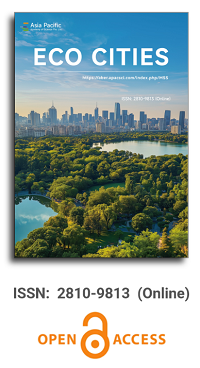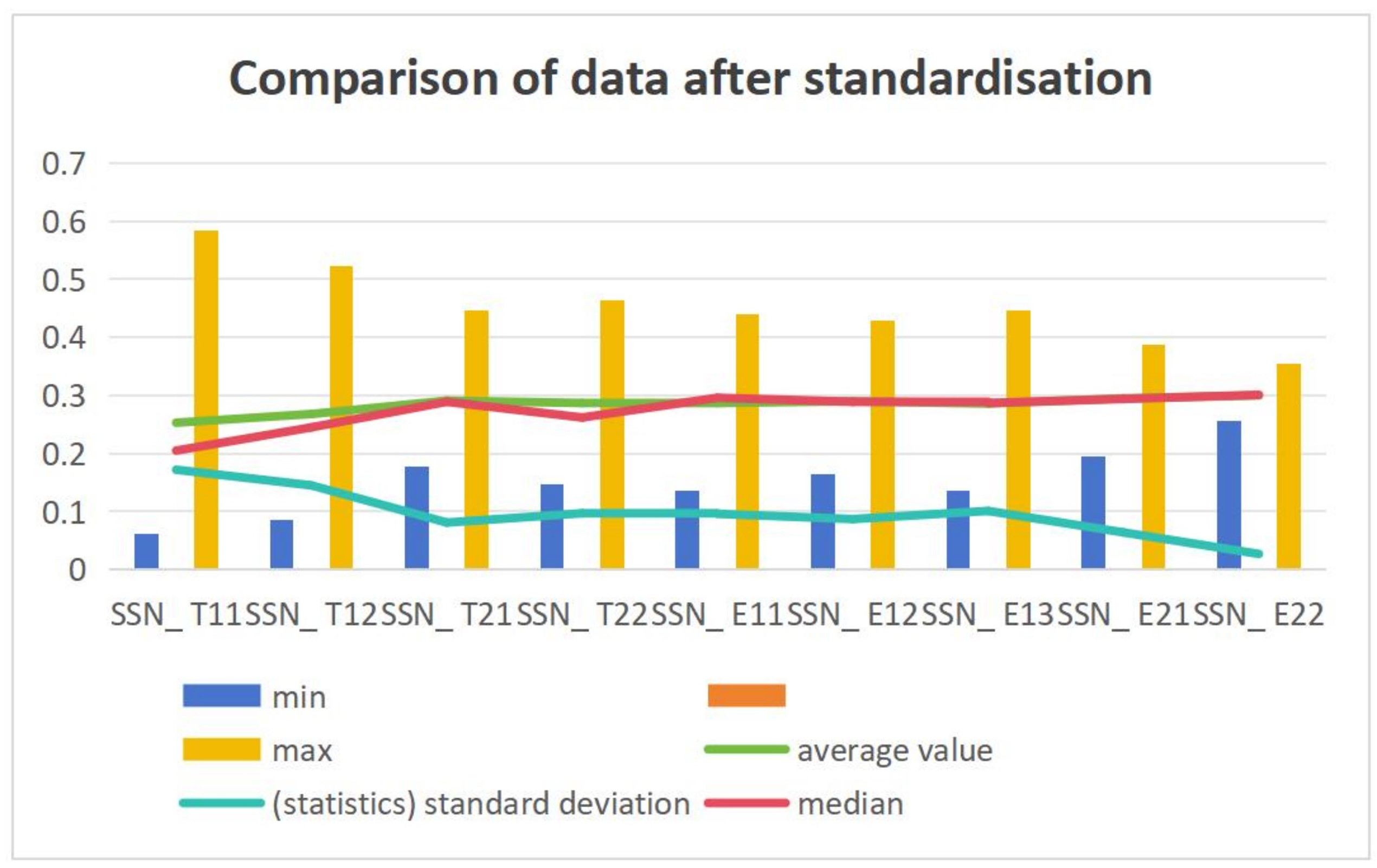


Research on evaluation of ecological livable city based on residents’ satisfaction—Take Zhuzhou as an example
Vol 3, Issue 2, 2022
Download PDF
Abstract
Build an evaluation index system for an ecologically livable city, investigate the ecological livable level of Zhuzhou City from the perspective of residents’ satisfaction, study the influencing factors of residents’ satisfaction by using exploratory factor analysis, analysis of variance and correlation analysis, and calculate the ecological livable level of Zhuzhou City and its four main urban areas. The research results show that: (1) The satisfaction evaluation of ecological livability in Zhuzhou City is mainly composed of four-dimensional factors: urban participation, human settlements, urban security, and human settlements economy, and the impact effect shows a decreasing trend. (2) There are significant differences in the satisfaction evaluation of various factors in terms of residents’ age, educational background, and length of residence, and there is a significant negative correlation between residents’ sense of belonging and satisfaction. (3) The overall satisfaction level of ecological livability in Zhuzhou is general. Among the four main urban areas, Lushong District has the highest satisfaction score, and Hetang District has the lowest score. On this basis, put forward targeted policy suggestions to improve the ecological livability of Zhuzhou City.
Keywords
References
- Howard E. Garden cities of tomorrow. London: Faber and Faber; 1946.
- Lennard HL. Principles for the livable city. International making cities livable conferences. California: Gondolier Press; 1997.
- Xinhua News Agency. Suggestions of the CPC Central Committee on formulating the 14th five-year plan for national economic and social development and the long-term goals for 2005; 2020. Available from: http://www.gov.cn/zhengce/2020-11/03/conte nt_5556991.htm.
- Zanella A, Camanho AS, Dias T. The assessment of cities’ livability integrating human wellbeing and environmental impact. Annals of Operations Research 2015; 226(3): 695–726.
- Leach JM, Lee SE, Boyko CT, et al. Dataset of the livability performance of the city of Birmingham, UK, as measured by its citizen wellbeing, resource security, resource efficiency and carbon emissions. Data in Brief 2017; (15): 691–695.
- Paul A. Developing a methodology for assessing livability potential: An evidence from a Metropolitan Urban Agglomeration (MUA) in Kolkata, India. Habitat International 2020; 105(11): 1–12.
- Elsawy AA, Ayad HM, Saadallah D. Assessing livability of residential streets-case study: El-Attarin, Alexandria, Egypt. Alexandria Engineering Journal 2019; 58(2): 745–755.
- Ghasemi K, Hamzenejad M, Meshkini A. The spatial analysis of the livability of 22 districts of tehran metropolis using multicriteria decision making approaches. Sustainable Cities and Society 2018; 38(1): 382–404.
- Oscar Nigro H, Gonzalez Cisaro SE. The citizen satisfaction index: Adapting the model in argentine cities. Cities 2016; 56(7): 85–90.
- Zong Y, Song J. Evaluation of urban coordinated and intensive land use management from the perspective of ecological livability—A case study of Tianjin. Journal of Tianjin University (Social Science Edition) 2017; 19(4): 333–337.
- Liu X, Huang S, Du J, et al. Multi objective optimization method of land use space in ecologically livable cities. Geographic Information World 2019; 26(6): 49–55.
- Wang R, Wang J, Yin J, et al. Accelerate the legislation of agricultural plastic film pollution prevention and control, and promote the revitalization of ecological livability in rural areas. Agricultural Resources and Regionalization in China 2019; 40(2): 13–20.
- Li Q, Yu G. Study on the influencing factors of residents’ satisfaction in the old urban renew based on person correlation degree—A case study of old urban area reconstruction in Suining city. Journal of Beijing University of Civil Engineering 2020; 36(1): 18–23.
- Min L, Xiong B. Research on planning strategy of livable community—Taking Wuhan low carbon ecological community planning as an example. Planner 2012; 28(6): 18–23.
- Liao X, Yan Z. Evaluation of livable level of cities in Huaihe River Ecological Economic Belt based on factor and cluster analysis. Journal of Shanxi Normal University (Natural Science Edition) 2019; 33(3): 106–110.
- Dong W, Zhang K. Research on the construction of eco livable city in Henan Province based on AHP. Forestry Economy 2016; 38(4): 65–69,83.
- Zhang X, Lei Z, Zhang H. Indicators and evaluation methods of eco livable city construction—A case study of Tianjin. Urban environment and urban Ecology 2012; 25(1): 18–21.
- Chen Y, Zhang C, Wang J. Study on Evaluation and construction of ecologically livable cities in Western underdeveloped areas—A case study of Guiyang City. Journal of Guizhou Normal University (Natural Science Edition) 2017; 35(2): 7–13.
- Shi G, Cao J, Tang Z, et al. Evaluation of urban ecological livability based on matter-element model —A case study of Zhangye. Contemporary Economy 2018; (13): 71–75.
- Zhang T, Zhou J. Study on urban ecological livable level based on grey correlation analysis—Taking the sample data of Tianjin from 2003 to 2013 as an example. Future and Development 2016; 40(4): 107–112.
- Hunan Provincial People’s Government Network. Zhuzhou was selected as “the 40 most successful cities in economic development in the 40 years of reform and opening up” [Internet]. [updated 2018 Jul 25]. 2020. Available from: http://www.hunan.gov.cn/ hnyw/szdt/201806/t20180625_5038348.html.
- Zenker S, Petersen S, Aholt A. The Citizen Satisfaction Index (CSI): Evidence for a four basic factor model in a German sample. Cities 2013; 31(4): 156–164.
- Zhang W. The core framework of the livable city construction. Geographical Research 2016; 35(2): 205–213.
- Li H, Xu G. Investigation, evaluation and improvement countermeasures of ecological livability in Suzhou—From the perspective of residents’ satisfaction. Ecological Economy 2016; 32(12): 159–162.
- Zheng C, Ma K, Su J. Evaluation of eco-livable cities based on residents’ satisfaction. Statistics & Decision 2014; (5): 64–66.
- EIU. The global liveability index 2019 [Internet]. [updated 2019 Sept 3]. 2020. Available from: http:// www.eiu.com/Handlers/WhitepaperHandler.ashx?fi=Liveability-Free-repor2019.pdf&mode=wp&camp aignid=liveability.
- Kaiser HF, Rice J. Little Jiffy, mark Iv. Educational and Psychological Measurement 1974; 34(1): 111–117.
- Tian X, Zhang H. Residents’ satisfaction and improvement strategies in livable cities in China—A case study of Zhengzhou. Modern Urban Research 2017; (4): 115–119.
Supporting Agencies
Copyright (c) 2022 Shujia Tan
License URL: https://creativecommons.org/licenses/by/4.0

This site is licensed under a Creative Commons Attribution 4.0 International License (CC BY 4.0).

Chinese Academy of Sciences, China
Indexing & Archiving
Asia Pacific Academy of Science Pte. Ltd. (APACSCI) specializes in international journal publishing. APACSCI adopts the open access publishing model and provides an important communication bridge for academic groups whose interest fields include engineering, technology, medicine, computer, mathematics, agriculture and forestry, and environment.



.jpg)

.jpg)



